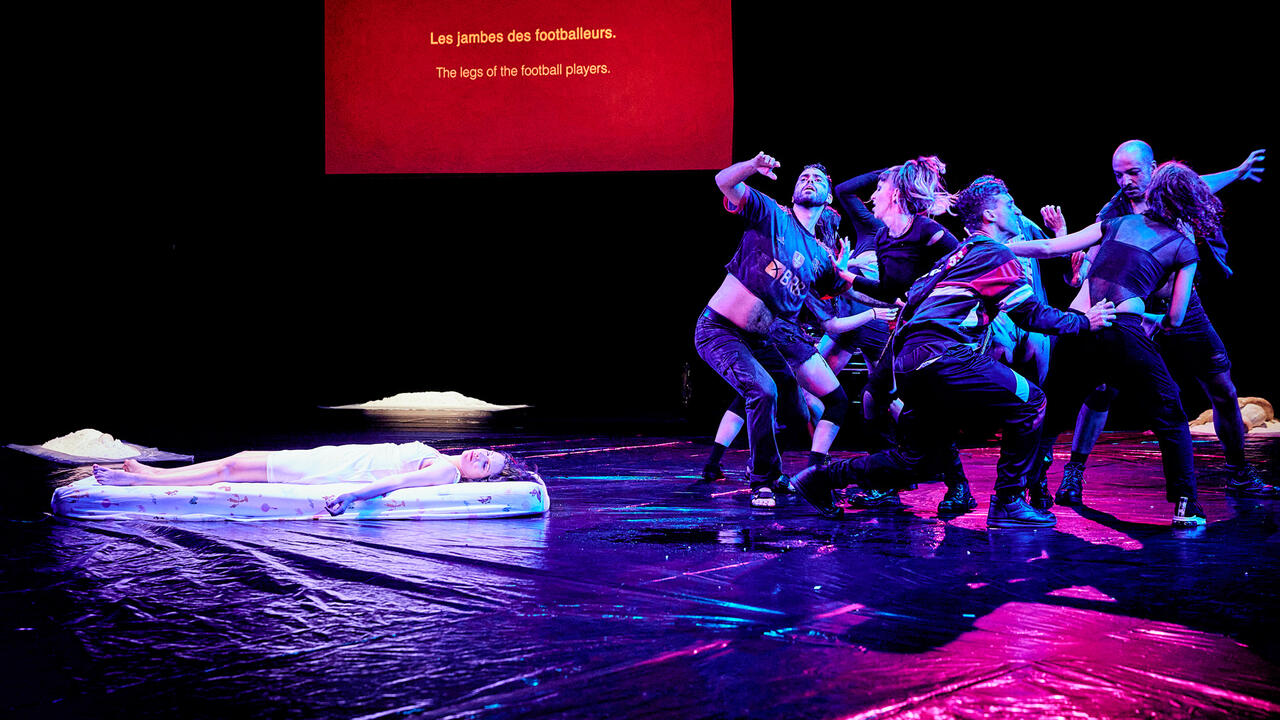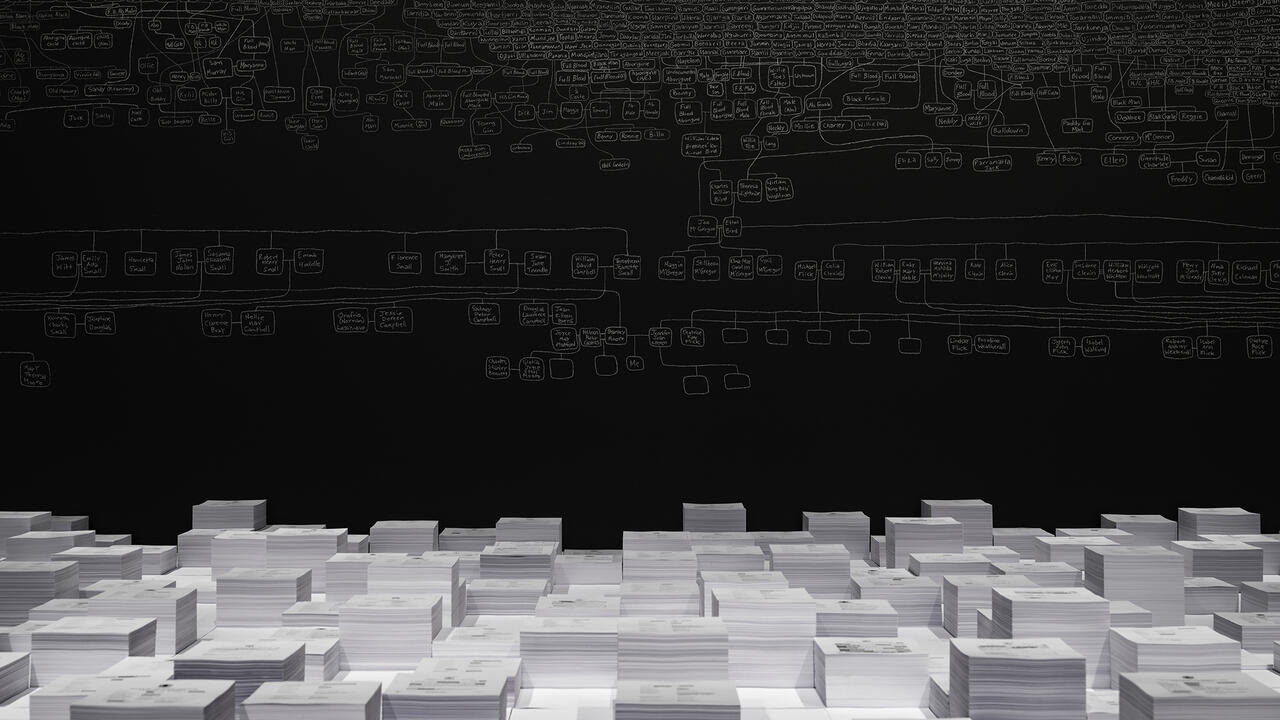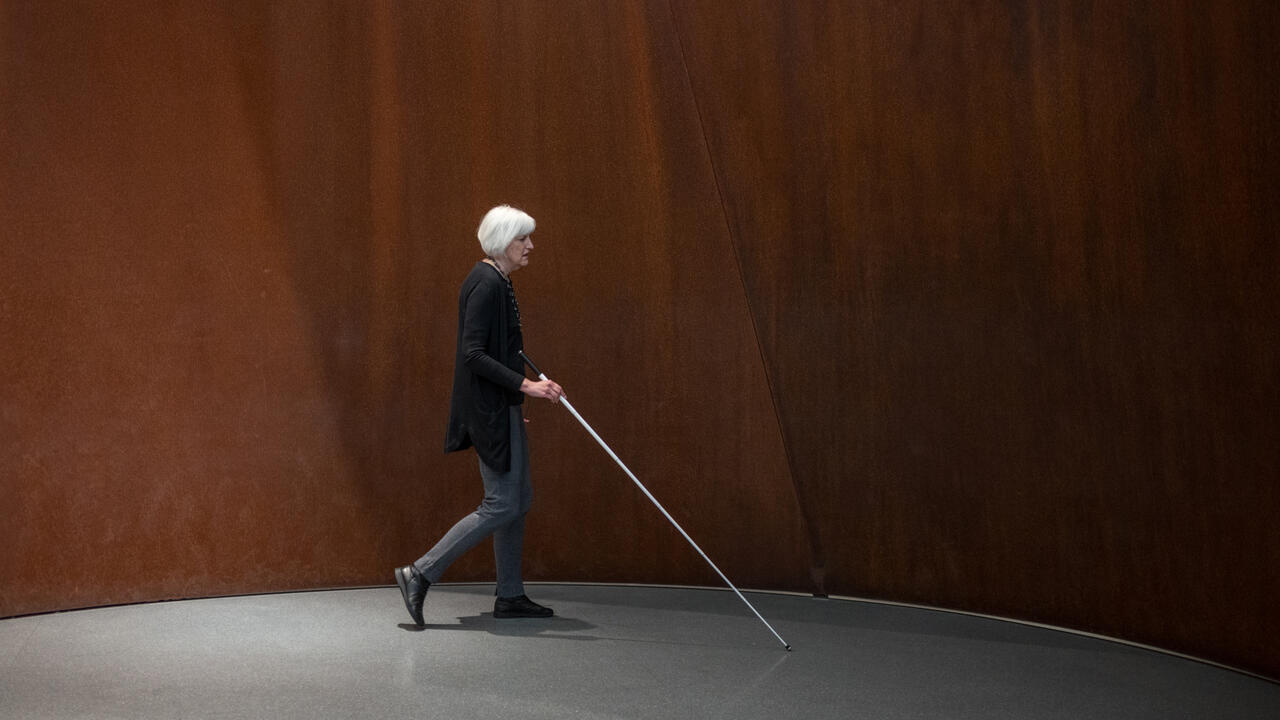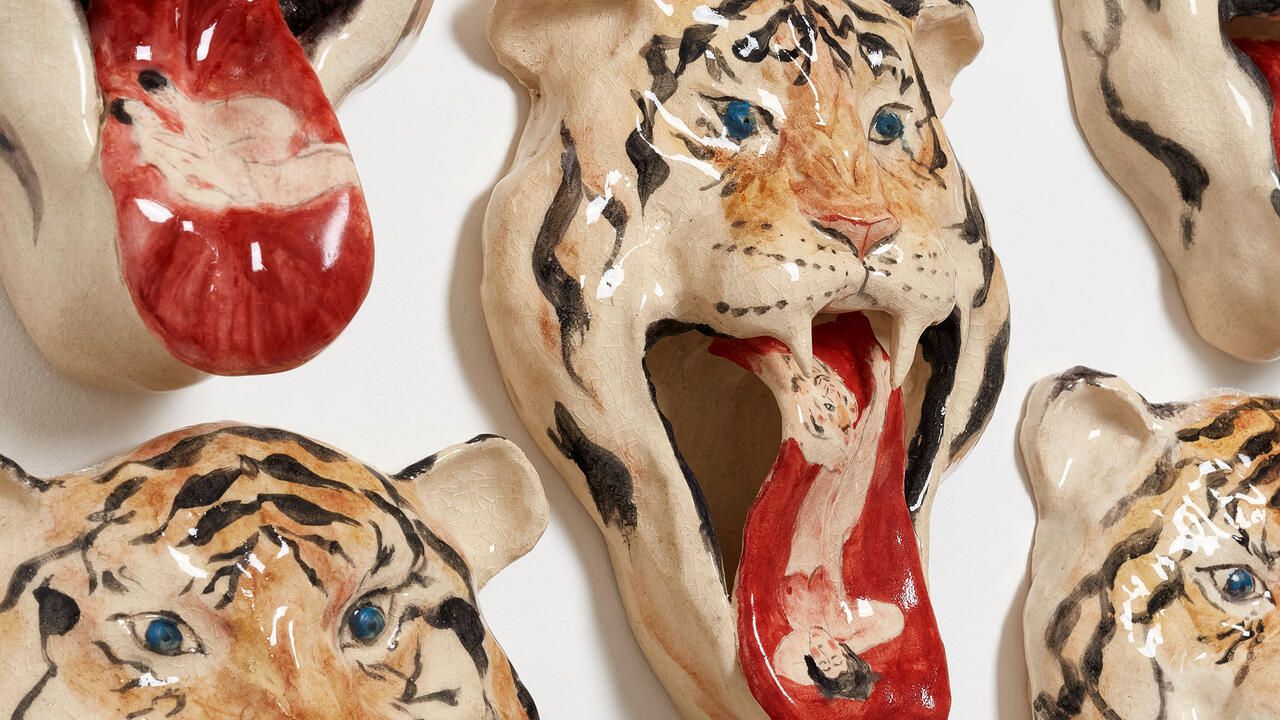Spiral Village
It depends on one's frame of mind whether the birds nesting on the electrical line, against the heaving, gloomy bulk of Maastricht's grey winter weather are braver than the art-addled visitor who insists on visiting Dinos and Jake Chapman's sculptural simulation of two murder victims. Hanging high from the ceiling, the mutilated figures, fed by an electric pump, send oozes of blood splashing down to the floor. The blood, which is obviously artificial, comes from wounds so terrible that you wonder what could have inflicted them. This image of excess and sadness, while not necessarily in step with the rest of the exhibition, forms the opening story of 'Spiral Village' curated by Francesco Bonami.
'Spiral Village', it would appear, is Bonami's story around conflicting points at which questions of global culture collide with introspective and localised issues of identity. But Bonami, an art world veteran, must surely know by now that this question is a dead horse. It is perhaps this recognition, in which he has set his perspective and priorities against the grain of the reductiveness that accompanies discussions around globalisation and identity, that makes this exhibition interesting. Rather than taking the standard approach by representing mere facts of discontent, angst, class and political struggle in the metropolis as his conceptual matrix, Bonami seems to have opted for a seductively off-hand approach, which at times appears both melancholic and frenetic.
The exhibition, which was first shown in Turin late last year, gathers together the work of 16 artists from nine countries. The artists represented here are often young, and their work frequently quasi-conceptual, photographic or time-based. Another element is that the selected projects lack that irritatingly deliberate stridency of most politicised art. In this show, the artists' concerns seem muted and quite personal, even when they are staged and re-enacted as public spectacles. Maurizio Cattelan's piece, a hunched rag figure of a homeless man bundled and crushed on a corner wall at the museum entrance is so lacking in pretence that one almost misses it. Thus, in order not to miss the layered subtleties which some of the works convey, I tried to train my ears to those sounds that seep through the muted base from which many of the artists speak. For if I approach the works by looking for their anchor in proximate causes outside the somatic registers of the artists, I am instantly led astray. Each encounter then, seems like walking on endless precipices, on a field of fault lines.
Easy answers are not possible. On this account, Sam Taylor-Wood's video Travesty of a Mockery (1996) seemed archly poignant. The dual screen projection deals with the despondency and tension which accompany the dialogues unfolding daily on the screen of domestic relationships. This work also whispers of other truths about identity. It is for the same reason that Thomas Demand's photographs strike me hard in that part of the heart flush with the leaves of melancholy his simulated pictures are about what could be but is not, because they exist as supplements to a vastly de-realised image of the world; a world whose propensity towards alienation both rejects us and our desires. As such, these photographs are nothing more than digital mises-en-scènes. They reveal that hard-edged reality etched in the soft-focus world of modern reticence. Their artificiality evokes images of recent architectural spaces as virtual utopias unlived in and unliveable, their occupation by corporeal forms immensely deferred.
In Sandal's Tale (1996) Gabriel Orozco made a pitch for Third World migrancy through a series of photographs that document battered and abandoned sandals worn by poor people anywhere from Mexico to India to Zaire. This work, rather than inscribing presence, instead emphasises silence and absence, and the almost forced removal of the Third World poor as active players on the global village stage. It seems it is this silence which Pascale Marthine Tayou's work is hell bent on occupying with the aggressive, yet melancholic noise of his baroque installation. Tayou's wrecked rooms, filled with all manner of refuse (torn bits of paper, dirt, wrapped bundles, graffiti) brought in from the outside seem to enact a quixotic kind of environmental art, at once Arte Povera and agit prop.
Philippe Parreno's contribution Le Pont du Trieur (1996), a stylised documentary film, was shot, according to the film's narrator, somewhere in Central Asia. Viewing it, I wondered whether the narrator is telling a fictional story set in a real place or whether it is a real story in a fictional place. Shown on a grid of 48 TV screens, I experienced a vivid sense of vertigo watching the rushing scenes of the sparsely populated, arid mountainous landscape. Though it seems to force us to account for another kind of reality, the vast emptiness in the film appears to be less about the spaces people occupy than a kind of dystopia carried through in the echo of the space.
For different kinds of reasons, this sensibility of loss and emptiness permeates the work of the other artists. Rirkrit Tiravanija's marvellous installation is an image of vacation fantasy camping and cooking seen on a monitor installed in the back seat of a vintage Ford. It is awfully funny, though the American suburban distemper it shows isn't. Next to this was Mark Dion's sinister border post: a diminutive house filled with scissors. Elsewhere, Tobias Rehberger's installation of vases overflowing with dying flowers spoke to me about death and time passing. Whatever the points these artists were touching upon, Bonami has done well to allow the works to emerge from their own strange and disparate contexts rather than unnecessarily politicising them, and this makes 'Spiral Village' a Beckettian proposition for the 90s.

















